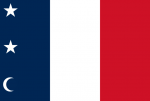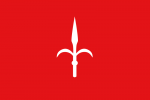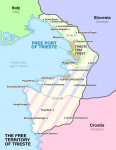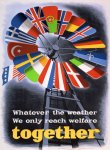-
Hi Guest!
The costs of running this forum are covered by Sea Lion Press. If you'd like to help support the company and the forum, visit patreon.com/sealionpress -
Thank you to everyone who reached out with concern about the upcoming UK legislation which requires online communities to be compliant regarding illegal content. As a result of hard work and research by members of this community (chiefly iainbhx) and other members of communities UK-wide, the decision has been taken that the Sea Lion Press Forum will continue to operate. For more information, please see this thread.
You are using an out of date browser. It may not display this or other websites correctly.
You should upgrade or use an alternative browser.
You should upgrade or use an alternative browser.
Flags of Countries that Barely Were
- Thread starter Ganesha
- Start date
SpudNutimus
Well-known member
The Free Territory of Trieste, 1947-1954, had a very aesthetically pleasing flag.
To accommodate the Istrian city of Trieste's ethnically mixed Italian, Slovene, and Serbo-Croatian population after the end of WWII and the fall of Fascist Italy, the city of Trieste and its surroundings were placed under the direct administration of the U.N. Security Council with the intent of resolving tensions over the area between Italy and Yugoslavia, and the city functioned independently from both Italy and Yugoslavia for several years.
However, the Soviet delegation on the Security Council refused to allow any single Western-backed governor of the territory to take office and vice versa, and the city's military governance during this period was in practice divided into two zones with separate governors, "Zone A" under American and British forces and "Zone B" under Yugoslav forces. As time went on and tensions between the newly formed North Atlantic Treaty Organization and Warsaw Pact continued to increase into the early 1950s, any resolution to the gubernatorial dispute became unviable, and in 1954 the Free Territory of Trieste was dissolved under the London Memorandum, the majority of "Zone A" including the city itself becoming part of Italy and the remainder including "Zone B" becoming part of Yugoslavia, today divided between Slovenia and Croatia.
It's also worth noting that this is only one of two variants of the territory's flag. The red variant shown before was the official flag of the territory, but in practice was primarily flown in "Zone B" by Yugoslav forces, while "Zone A" used a similar flag but with a U.N. blue background instead of a red one. The blue variant is notably visible in this iconic "weather vane" poster promoting the Marshall Plan from 1950.
To accommodate the Istrian city of Trieste's ethnically mixed Italian, Slovene, and Serbo-Croatian population after the end of WWII and the fall of Fascist Italy, the city of Trieste and its surroundings were placed under the direct administration of the U.N. Security Council with the intent of resolving tensions over the area between Italy and Yugoslavia, and the city functioned independently from both Italy and Yugoslavia for several years.
However, the Soviet delegation on the Security Council refused to allow any single Western-backed governor of the territory to take office and vice versa, and the city's military governance during this period was in practice divided into two zones with separate governors, "Zone A" under American and British forces and "Zone B" under Yugoslav forces. As time went on and tensions between the newly formed North Atlantic Treaty Organization and Warsaw Pact continued to increase into the early 1950s, any resolution to the gubernatorial dispute became unviable, and in 1954 the Free Territory of Trieste was dissolved under the London Memorandum, the majority of "Zone A" including the city itself becoming part of Italy and the remainder including "Zone B" becoming part of Yugoslavia, today divided between Slovenia and Croatia.
It's also worth noting that this is only one of two variants of the territory's flag. The red variant shown before was the official flag of the territory, but in practice was primarily flown in "Zone B" by Yugoslav forces, while "Zone A" used a similar flag but with a U.N. blue background instead of a red one. The blue variant is notably visible in this iconic "weather vane" poster promoting the Marshall Plan from 1950.
Last edited:
The Free Territory of Trieste, 1947-1954, had a very aesthetically pleasing flag.
It's also worth noting that this is only one of two variants of the territory's flag. The red variant shown before was the official flag of the territory, but in practice was primarily flown in "Zone B" by Yugoslav forces, while "Zone A" used a similar flag but with a U.N. blue background instead of a red one. The blue variant is notably visible in this iconic "weather vane" poster promoting the Marshall Plan from 1950.
Gorgeous flag! Can't believe I never noticed it on the "weather vane" poster before.
Cheers,
Ganesha

This is the flag of Nevis, one of the two primary islands of the Caribbean nation of St. Kitts and Nevis. Despite its small population of only 12,000 (in a country of 50,000), the island of Nevis has a secessionist movement. If it ever succeeded, it would be one of the world's smallest countries by both area and population. In 1998, 61% of voters preferred independence, but a ⅔ majority was required (in addition to only 60% turnout).
The flag of the Federation of St. Kitts and Nevis is in the top-left of the Nevis flag, while the triangle represents Nevis Peak, a 3200-foot stratovolcano. It's a pretty beautiful mountain in real life, but the flag's representation just looks bland to me.

This is a flag that could use a lot of improvement. If Nevis ever does become independent, I hope they change it ASAP; vexillology should definitely be a new country's #1 priority!
Cheers,
Ganesha
Another month, another flag: may I present the flag of the Bogd Khanate, known in Mongolian as the State of Mongolia Elevated by the Many, aka one of many governments that ruled Mongolia intermittently between 1911 and 1924 as the Qing and Russian empires fell apart.
A theocratic, autocratic Buddhist monarchy, the Khanate had many colorful moments and characters. Perhaps no one sums up the slight madness of the era better than Nikolai Robert Maximilian Freiherr von Ungern-Sternberg, the Russo-German semi-aristocratic lunatic who ended up a Mongolian warlord trying to revive the Mongol Empire before being defeated and shot by the Red Army. I strongly encourage reading his Wikipedia page - a wild ride if there ever was one.
Their flag is also worth taking some time to look at, with that gorgeous Mongolian script:
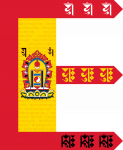
Cheers,
Ganesha
A theocratic, autocratic Buddhist monarchy, the Khanate had many colorful moments and characters. Perhaps no one sums up the slight madness of the era better than Nikolai Robert Maximilian Freiherr von Ungern-Sternberg, the Russo-German semi-aristocratic lunatic who ended up a Mongolian warlord trying to revive the Mongol Empire before being defeated and shot by the Red Army. I strongly encourage reading his Wikipedia page - a wild ride if there ever was one.
Their flag is also worth taking some time to look at, with that gorgeous Mongolian script:

Cheers,
Ganesha
The flag of the Iranian Soviet Republic, which was proclaimed in the province of Gilan on the southern shore of the Caspian Sea and lasted from June 1920 until September 1921. The figure in the canton is Kaveh (the text on the flag he holds is his name), a mythical blacksmith who became a folk hero after leading a rebellion against a Persian tyrant.

Radac
President of Anti-Thomist Action
- Location
- Pentapotamia-in-Exile
- Pronouns
- he/him
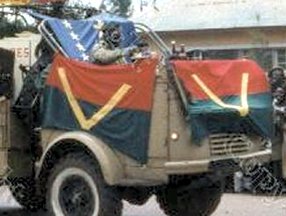
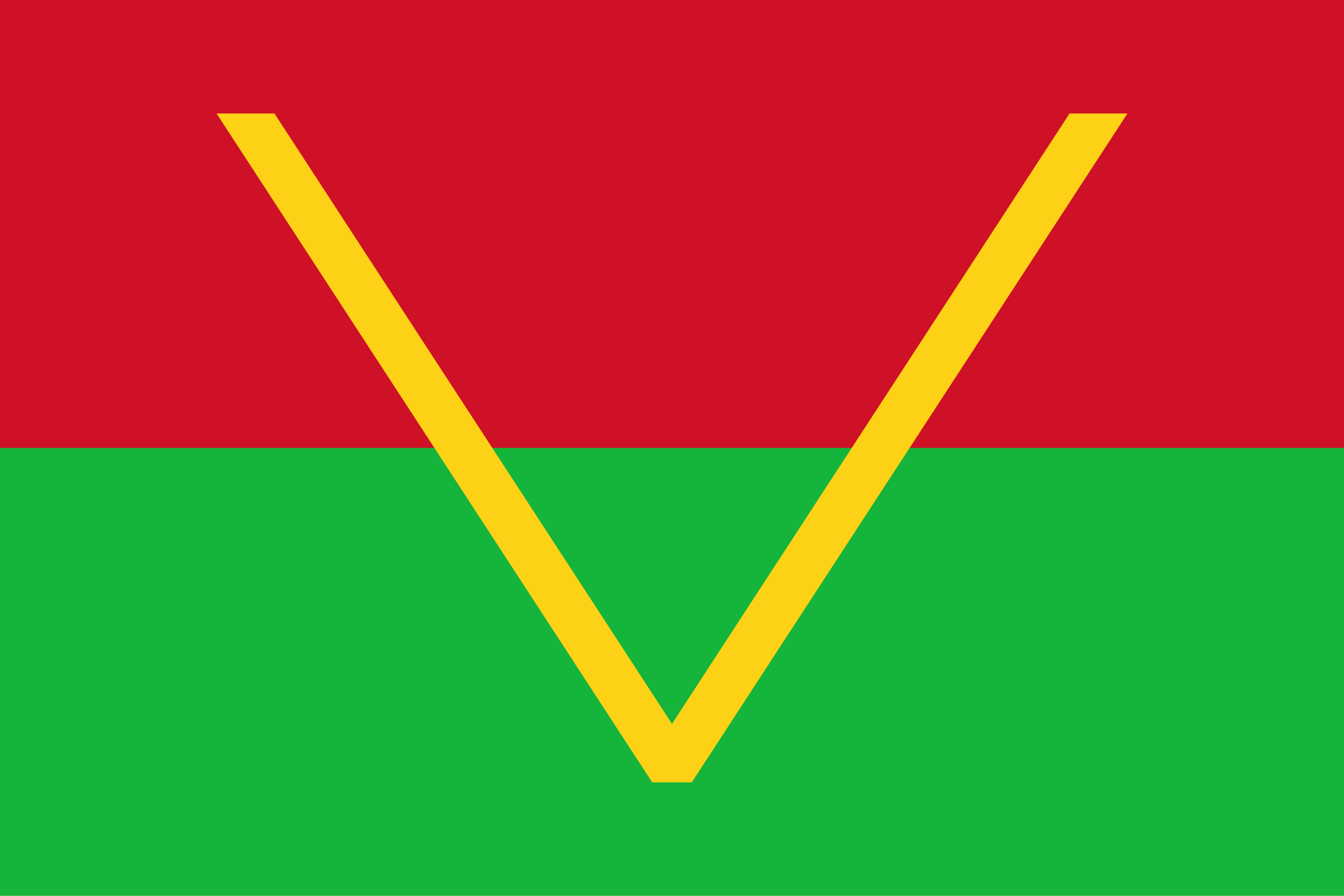
The flag of South Kasai, a separatist entity which existed in the Congo from 1960 until 1962. Led by Albert Kalonji, a Baluba leader who had previously been a member of Patrice Lumumba's MNC, South Kasai, unlike Katanga, didn't actually formally declare independence. Kalonji would, however, declare himself the mulopwe or monarch of South Kasai, this being a title used in the Luba Empire.

This flag is of Hyderabad State, a princely state in modern-day South India which briefly declared independence.
Hyderabad was founded by Mir Qamaruddin or Asaf Jah I, a Mughal governor and general who was of mixed Uzbek and Punjabi heritage. Qamaruddin became the nizam or ruler of Hyderabad in 1724. According to folklore, before Qamaruddin went South to the Deccan, he met with a Sufi saint, Hazrat Nizamuddin Aulia. The saint gave him kulchas (a kind of flatbread) on a yellow cloth to eat - and Qamaruddin ate seven. The saint then told him that his descendants would reign for seven generations. Some say that the circle on the flag is a kulcha, and the yellow colour represents the yellow cloth. Hyderabad, under the 7th Nizam, Asaf Jah VII, or Mir Osman Ali Khan, declared independence briefly in 1948, before a widespread communist rebellion against the feudalistic system that existed and the intervention of the Indian army ended it for good. Today, Hyderabad is the capital of the state of Telangana, India's newest state.
Last edited:
Radac
President of Anti-Thomist Action
- Location
- Pentapotamia-in-Exile
- Pronouns
- he/him
Also a very old post but the first in this thread; I'd mention here that this flag isn't actually the flag Makhno used; or rather, Makhno himself denied that he used this flag.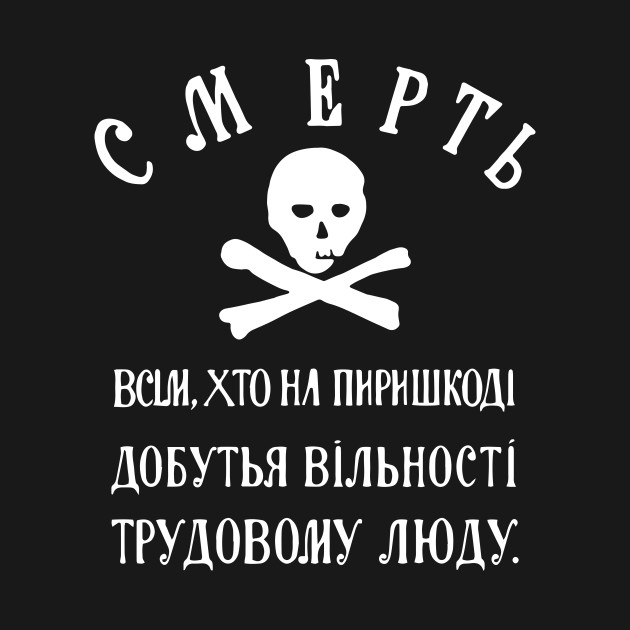
A flag of the Free Territory (1918-21), an attempt to form a stateless anarchist society in modern East Ukraine.
(The one on Wikicommons is really inaccurate. This is the correct version based on the photo below.)
A fun one - the Dolphin Flag of the Republic of Anguilla. The Caribbean island was briefly under self-rule from 1967-69 due to a host of complicated issues, before the Brits took it back over and the situation calmed down. This was their flag, based on the coat of arms. It's a substantial improvement over their actual current flag (a very boring blue banner with the Union Jack in the corner) and apparently is still used on the island:
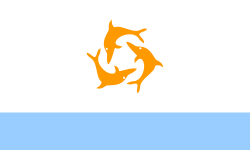
Cheers,
Ganesha

Cheers,
Ganesha
The Comrat Republic lasted about 6 days during the 1905 Russian Revolution. In Gagauzia in what's now Moldovia, it seems to have been the work of a small leftist party, the Socialist Revolutionary Party, and adopted their banner as its flag. 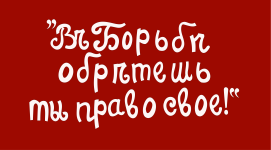
The text reads Въ борьбѣ обрѣтешь ты право свое, meaning "through struggle, you will obtain your rights!"
Cheers,
Ganesha

The text reads Въ борьбѣ обрѣтешь ты право свое, meaning "through struggle, you will obtain your rights!"
Cheers,
Ganesha


